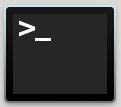Om Redis te implementeren in Magento 1.x volg je deze instructies:
Activeer Redis
- Zorg er eerst voor dat je Redis caching activeert vanuit uw controlepaneel
Magento 1.X aanpassen voor gebruik met REDIS
Ondersteuning voor REDIS is al ingebouwd in Magento Community Edition 1.x sinds versie 1.8. Je moet geen bijkomende modules installeren. Je moet enkel een paar kleine dingen aanpassen in de config bestanden.
Zet REDIS support aan

In SSH ga je naar de map waar Magento geïnstalleerd is. Open het volgende bestand in vi:
vi app/etc/modules/Cm_RedisSession.xml
In dit bestand zal je de volgende content vinden:
<config>
<modules>
<Cm_RedisSession>
<active>false</active>
<codePool>community</codePool>
</Cm_RedisSession>
</modules>
</config>
Wijzig deze waarde van “false” naar “true” zodat je het volgende krijgt:
<config>
<modules>
<Cm_RedisSession>
<active>true</active>
<codePool>community</codePool>
</Cm_RedisSession>
</modules>
</config>
Sla dit nu op.
Bewerk app/etc/local.xml
Nog steeds in de root van de Magento installatie, tik je het volgende commando in:
vi app/etc/local.xml
Dit bestand vul je met volgende code:
<cache>
<backend>Cm_Cache_Backend_Redis</backend>
<backend_options>
<server>250.250.250.1</server>
<port>10000</port>
<persistent></persistent>
<database>0</database>
<password>Jh7whJHUijxnn9n823nzHjh9</password>
<force_standalone>0</force_standalone>
<connect_retries>1</connect_retries>
<read_timeout>10</read_timeout>
<automatic_cleaning_factor>0</automatic_cleaning_factor>
<compress_data>1</compress_data>
<compress_tags>1</compress_tags>
<compress_threshold>20480</compress_threshold>
<compression_lib>gzip</compression_lib>
<use_lua>0</use_lua>
</backend_options>
</cache>
Deze blok code moet toegevoegd worden achter de </ crypt> en voor de tags in het bestand. In het voorbeeld moet je uiteraard de waarde van , , vervangen door de waarden in jouw REDIS instantie.
Na de aanpassingen zou het local.xml bestand er zo moeten uitzien:
<config>
<global>
<install>
<date><![CDATA[Wed, 18 Feb 2015 10:34:16 +0000]]></date>
</install>
<crypt>
<key><![CDATA[54140ba78d6q8ad6ad60ead96]]></key>
</crypt>
<cache>
<backend>Cm_Cache_Backend_Redis</backend>
<backend_options>
<server>250.250.250.2</server>
<port>10000</port>
<persistent></persistent>
<database>0</database>
<password>Jh7whJHUijxnn9n823nzHjh9</password>
<force_standalone>0</force_standalone>
<connect_retries>1</connect_retries>
<read_timeout>10</read_timeout>
<automatic_cleaning_factor>0</automatic_cleaning_factor>
<compress_data>1</compress_data>
<compress_tags>1</compress_tags>
<compress_threshold>20480</compress_threshold>
<compression_lib>gzip</compression_lib>
<use_lua>0</use_lua>
</backend_options>
</cache>
<disable_local_modules>false</disable_local_modules>
<resources>
<db>
<table_prefix><![CDATA[]]></table_prefix>
</db>
<default_setup>
<connection>
<host><![CDATA[mysql022.webhosting.be]]></host>
<username><![CDATA[ID140195_magento]]></username>
<password><![CDATA[LQPBIUYtbiBTbVPifTG]]></password>
<dbname><![CDATA[ID140195_magento]]></dbname>
<initStatements><![CDATA[SET NAMES utf8]]></initStatements>
<model><![CDATA[mysql4]]></model>
<type><![CDATA[pdo_mysql]]></type>
<pdoType><![CDATA[]]></pdoType>
<active>1</active>
</connection>
</default_setup>
</resources>
<session_save><![CDATA[files]]></session_save>
</global>
<admin>
<routers>
<adminhtml>
<args>
<frontName><![CDATA[admin]]></frontName>
</args>
</adminhtml>
</routers>
</admin>
</config>
Ledig de Magento cache
Vanuit de root directory van jouw Magento installatie voer je dit commando uit:
rm -rf var / cache
Login op de backend van Magento. Ga naar “System” => “Cache Management” en klik op “Flush Magento Cache”.
Test Redis
Controleer nu of de Redis Cache correct gevuld wordt. Dit doe je via het Redis-CLI als volgt:
Voer dit commando uit:
redis-cli -h redisipadress -p redisportnumber
Voorbeeld:
redis-cli -h 250.250.250.1 -p 10000
Dit is wat er zal verschijnen:
250.250.250.1:10000>
Typ nu het woord “AUTH” in, gevolgd door het wachtwoord van de Redis instantie en druk op Enter. Dat ziet er zo uit:
250.250.250.1:10000> AUTH ***************
Je zou nu een “OK” moeten terugkrijgen. Antwoord door het commando “keys” als volgt uit te voeren:
250.250.250.1:10000> keys *
Indien Redis correct geconfigureerd is, zou je een output moeten krijgen die er zo uitziet:
1) "zc:k:f01_B95179D8427D4CD3A6E015530E9E"
2) "zc:ti:f01_BLOCK_SLIDE2"
3) "zc:k:f01_Zend_LocaleC_nl_NL_country_MR"
4) "zc:ti:f01_BLOCK_CATEGORY_ABOVE_EMPTY_COLLECTION"
5) "zc:k:f01_A9B2A0BB16F05FAA2371C0A5FB79E81C"
6) "zc:k:f01_CMS_BLOCK_BLOCK_LEFT_TOP_1_1"
7) "zc:k:f01_Zend_LocaleC_sv_SE_language_sv"